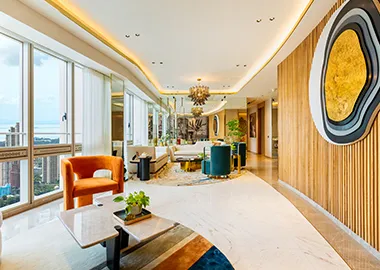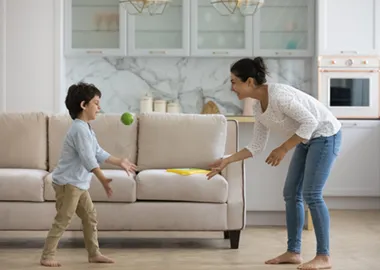Introducing future-ready office design trends: Greener inside
By Lodha
June 04, 2018'For last year's words belong to last year's language. And next year's words await another voice. And to make an end is to make a beginning.' - T.S. Eliot
2018 was the year when sustainability at workplace received a great impetus and found reflective interpretations through design. Biophilia as a concept was unearthed and set the precedent for greener workplaces. Technology ran the show and introduced wirelessly agile, dynamic, and flexible offices. The professional world was acquainted with benefits that the great outdoors brought in as sustainability became the norm. Green offices are set to experience the full potential of these changes as we reach halfway in year of 2019.
Calm in the middle of chaos
As urban cities welcome exponential growth in terms of infrastructural growth, concrete takes over green spaces. Organisations have begun to take note of this dearth of connectivity to nature among employees and its impact on their health and productivity. They are trying to bridge this gap through the creation of an oasis at work. Vertical living walls, enormous trees in foyers, desktop plants and creation of office parks take this idea of 'breathable spaces' forward. Presence of greenery is a major productivity booster as confirmed by Exeter University. The study recorded a 15% increase in productivity among those employees who work in green offices as opposed to their counterparts who don't.
Greening it up for the employees
Work is no longer a monotonous task. The experience derived while working has become the focal point of design. Millennials and Gen-Z employees are choosing to work in a space that not only allows them to grow but also offers a comfortable environment. A report from the Centres for Disease Control and Prevention states that 60% of lost work days are due to stress. Office designs are combatting this stress by bringing in holistic well-being through ergonomic furnishings that support employees' wellbeing. Creating social spaces can enable employees to unplug and enjoy the community aspect of work life. Adequate attention is also being paid to the creation of screen-free zones infused with colour psychology.
Smarter offices for the smart worker
Artificial Intelligence, Internet of Things, Cloud-based computing and management are being steadily embraced into workplaces. As a result, office designs are experiencing a shift dedicated towards the workers. Conference rooms are connected to a scheduling software, energy efficiency has become a reality; thanks to heat and light sensors, curated applications are taking productivity up a notch, data optimisation is tailoring personal workstations and giving a boost to optimal use of space with minimal wastage. Offices are surely getting smarter!
Here's what researchers at Harvard have to say about futuristic workspaces:
"Our goal is to improve the health of all people, in all buildings, everywhere, every day. To do this we are merging building science with health science and advocating for what we call 'buildingomics'--a new approach that examines the totality of factors in the building-related environment that influence human health, well-being, and productivity,"
In conclusion, offices of the future are bound to be employee-centric and would leverage technology for an energy efficient experience. Most importantly, they would continue to remain greener on the inside to reap massive returns in terms of revenue, innovations, and work output. Sustainability will form the core of office design as workspaces are introduced to the exponential benefits of rapid digitisation, virtual, and physical integration. Blending workspace design with nature will no longer remain a choice, rather will become a necessity.
To know about commercial projects from Lodha, click here
You may also like



 Enquire
Enquire
 Call
Call
 chat
chat
 Search
Search





